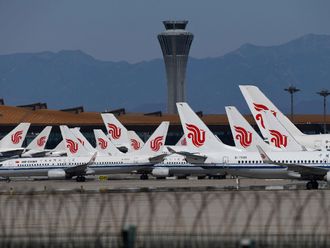Even after nearly five months, oil prices continue to drop, albeit interspersed with slight increases, to approach the $70 a barrel mark. The fluctuations have been accompanied by accusations and doubts among key players in the oil markets, often in contradiction to the law of supply and demand and its direct impact on commodity prices In recent years, the supply and demand status has been affected by several factors, most notably shale oil production in the US and allowing the US to regain its former position as the world’s largest oil producer, or at least at the same level to Saudi Arabia and Russia. Another important factor is the increase in oil production in other countries, including Russia and Iraq.
This was matched by a demand drop due to the economic slowdown in many of the consuming countries, particularly China, India and the EU, creating immense pressure on prices.
Nevertheless, the mentality of a conspiracy theory, which guided the late Iraqi president Saddam Hussain and led to the invasion of Kuwait and its catastrophic consequences, still dominates Iran’s mullah-led regime, which is the most affected by falling prices as a result of its foreign adventures and support of failed regimes and terrorist organisations.
In fact, the oil market cannot be managed and controlled by a single world power in the way portrayed in the conspiracy theorists. The oil monopoly era ended with the end of the dominance of the “seven sisters” — the cartel of major oil companies in the 1970s.
Also, the capitalist system is governed by economic laws that cannot be tampered, except through monopoly, which is prohibited under modern laws.
Logically, increases in oil prices should be caused by the high cost of shale oil production and which range between $70-$80 a barrel, in addition to rapid demand growth in some consumer countries.
Going forward, oil prices need not see further significant declines, as anything under $80 will lead to the halt of 10 per cent of US shale production, as declared by producing companies. It will contradict the interests of producing companies and may lead to an unwanted surge in prices.
Now, the vulnerability of lower prices will vary from one country to another. For example, Iran and Venezuela — which have both set a price of $100 a barrel in their budgets — will suffer more than others because there is a 25 per cent drop against the target price. Russia too will suffer because of growing pressures resulting from sanctions imposed on it in the wake of Ukraine’s crisis.
On the other hand, the GCC countries will be the least affected because they set their budgets on the basis of an average $65 a barrel. The Gulf nations may, however, resort to cut some aspects of their social spending that rose in their budgets over the last four years.
In all cases, producing countries have to adapt to the new conditions.
The Opec meeting, which is scheduled to take place on Thursday in Vienna, must focus on coordinating efforts among members and with producing countries from outside the organisation, such as Russia and Norway. It should also avoid putting blame on any one party or a certain country.
This is the correct — and rational way — to address imbalances and the sharp fluctuations in global oil markets so as to restore balance and stabilise prices at fair rates that reflect the importance of oil. This would benefit producers and consumers alike and the global economy at large.
Dr Mohammad Al Asoomi is a UAE economic expert and specialist in economic and social development in the UAE and the GCC countries.












